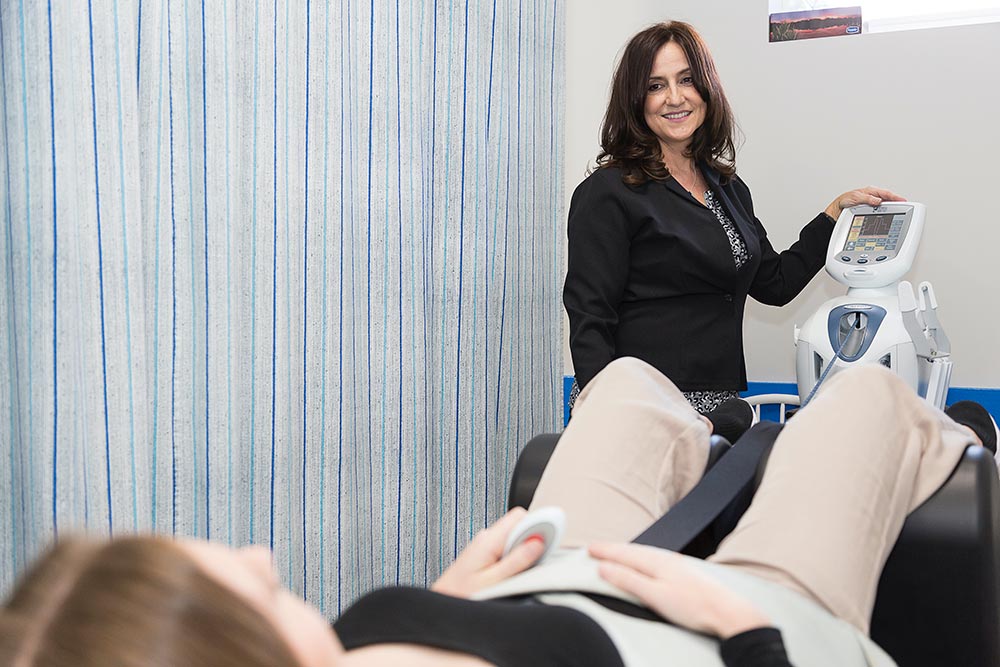Spinal Decompression:
Spinal decompression or mechanical traction applies traction stretch on a patient’s spine to reduce compression. When deemed appropriate by the physiotherapist, this machine can help someone with neck or low back issues. The treatment can decompress the discs in the spine, open up joint spaces, loosen soft tissue around the spine and reduce pain.
Patients who suffer from the chronic pain associated with bulging, degenerating, or herniated discs may benefit from treatment using a spinal decompression table. This type of pain, which can manifest as back or neck pain itself as well as associated pain in the arms and legs, may have already been treated by traditional traction methods or even by spinal surgery to limited improvement. In these cases, a spinal decompression table that uses computerized sensors to perform stretching actions on the spine and promote healing can be uniquely effective.
But what is a spinal decompression table, and how it can be used to treat patients who have not been able to find relief in other ways?
What is Spinal Decompression Therapy?
Spinal decompression therapy, also known as non-surgical spinal decompression, is a practice that utilizes spinal decompression tables to relieve pain by creating a scenario in which bulging or herniated disc tissue is able to move back into place and heal, alleviating the pain this condition causes.
Spinal decompression therapy aims to help patients who suffer from debilitating pain due to bulging, degenerating, or herniated discs. It can also be used for the pain management and treatment of many causes of sciatica, injured or diseased spinal nerve roots, and worn spinal joints.
The therapy itself works to stretch the spine, using a spinal decompression table or other device, in order to create negative pressure and space within the disc to allow disc fluid to move back into place. This creates an environment in which the disc can receive more nutrients and therefore heal itself more quickly and effectively. The ultimate goal of spinal decompression therapy is to relieve the patient’s chronic back, arm, neck, and/or leg pain, and to heal the source of said pain.
Spinal decompression therapy is also referred to as non-surgical decompression therapy, since it is often used as a safe, affordable, and extremely effective alternative to spinal surgery. The distinction between surgical and non-surgical spinal decompression is an important one, as surgical spinal procedures are often considered a last option, while spinal decompression therapy is a safe treatment at any stage of back pain. The most common spinal decompression surgeries are laminectomy and microdiscectomy, which present a greater risk of complication or failure.

